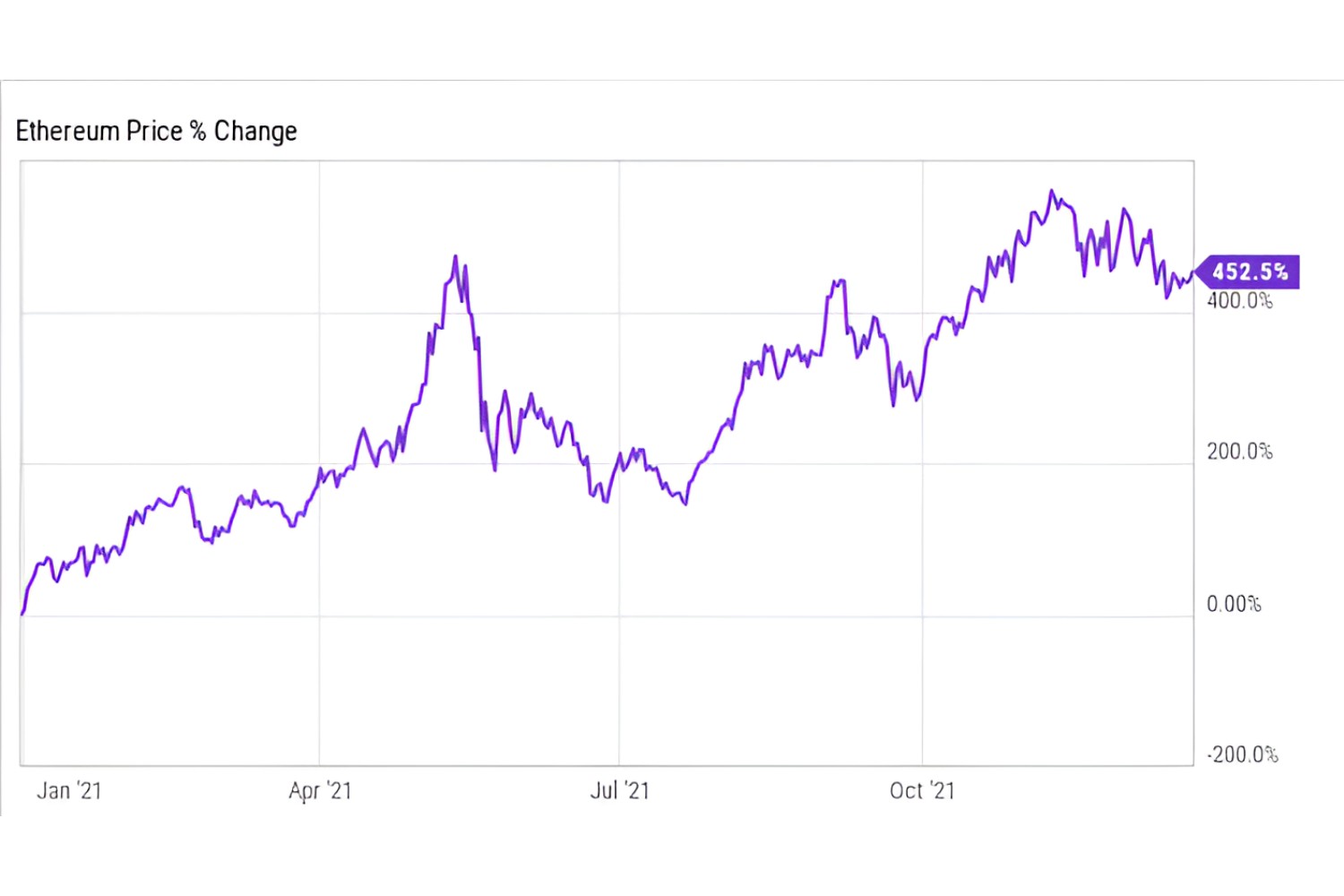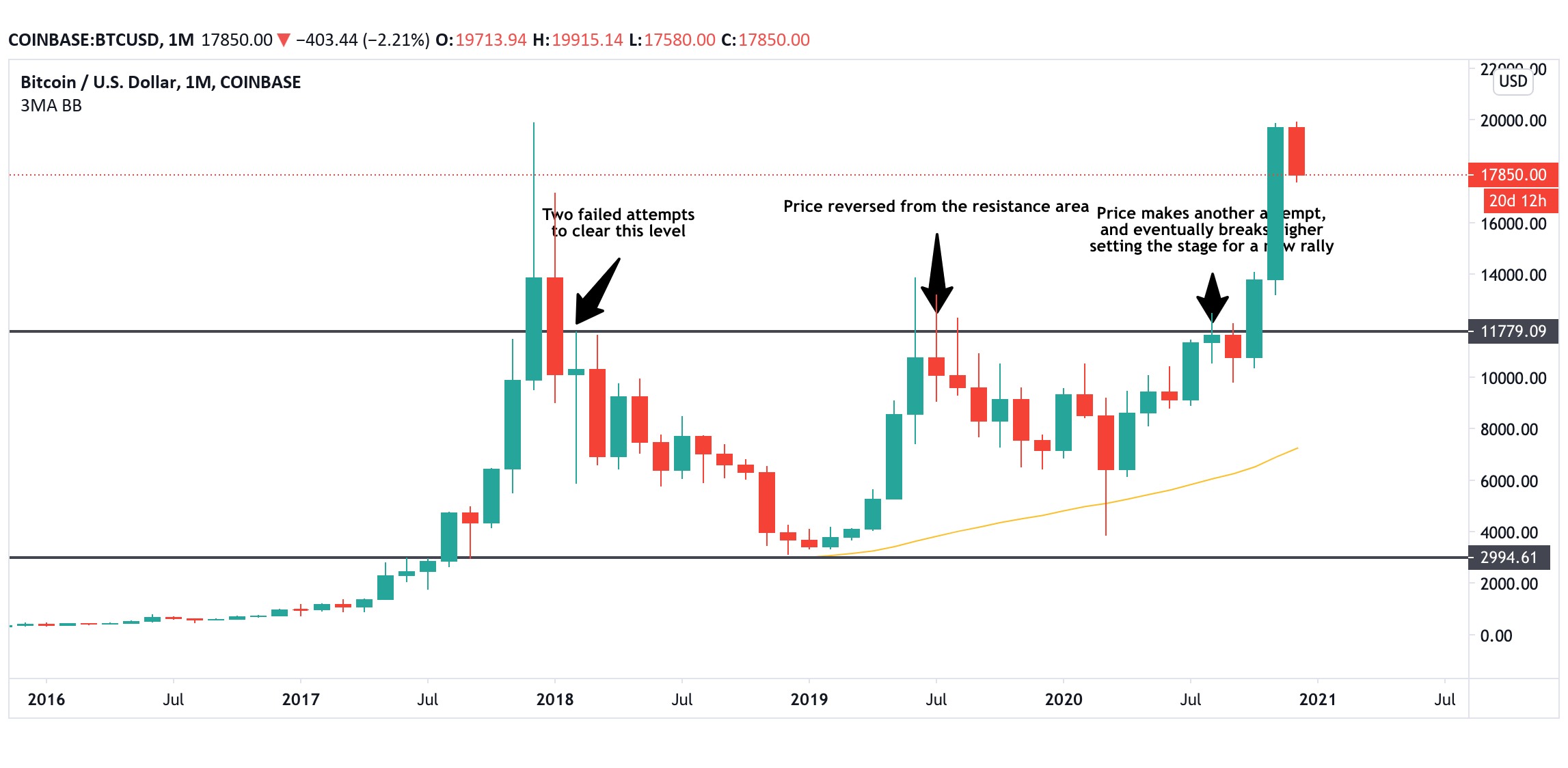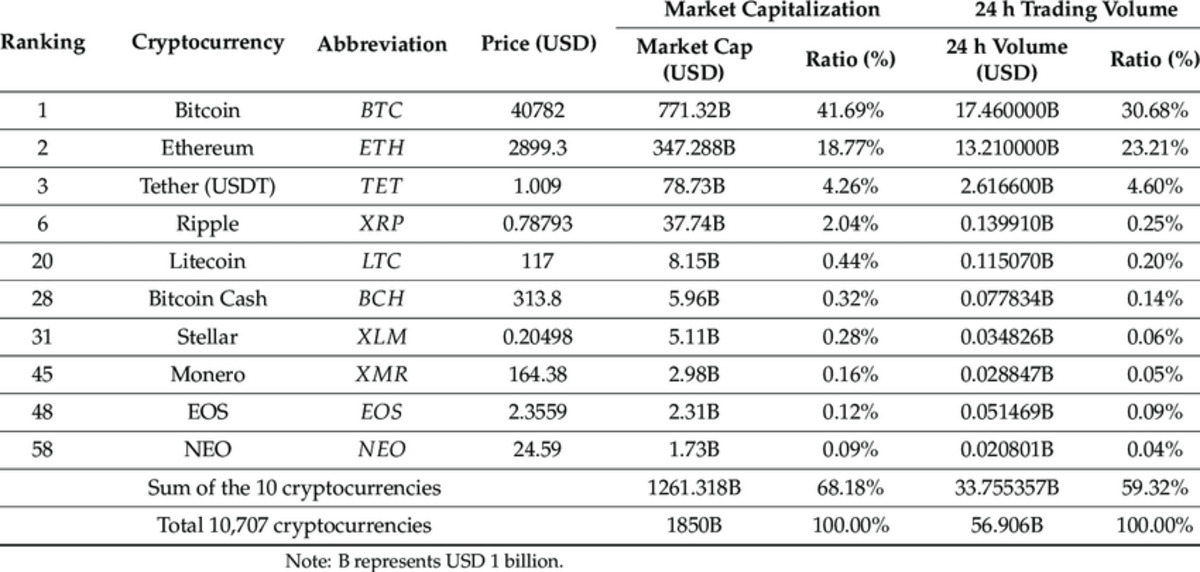Introduction
Welcome to the fascinating world of cryptocurrency analysis! Cryptocurrency has taken the financial world by storm, revolutionizing the way we think about money, transactions, and investments. With a wide range of cryptocurrencies available in the market, it can be overwhelming to navigate this digital landscape and make informed investment decisions. That’s where cryptocurrency analysis comes in.
Cryptocurrency analysis involves studying and evaluating various aspects of digital currencies to gain insights into their potential value, market trends, and investment opportunities. By employing analytical techniques, investors can make informed decisions based on data-driven evidence rather than relying on speculation or guesswork.
In this comprehensive guide, we will delve into the intricacies of analyzing cryptocurrency and explore the factors to consider, different analysis methods, and essential tools to help you make well-informed investment decisions in the digital currency space.
But first, let’s establish a clear understanding of what cryptocurrency is and why analyzing it is crucial in today’s financial landscape.
What is Cryptocurrency?
Cryptocurrency, as the name suggests, is a form of digital or virtual currency that employs cryptography for secure financial transactions, control the creation of new units, and verify the transfer of assets. Unlike traditional fiat currencies, such as the US Dollar or the Euro, cryptocurrencies are decentralized and operate on a technology known as blockchain.
Blockchain technology is a decentralized ledger that records all transactions across a network of computers. This means that there is no central authority, like a bank or government, controlling the transactions. Instead, the transactions are verified by a network of users, making them transparent, secure, and resistant to fraud.
One of the defining features of cryptocurrencies is their limited supply. For example, Bitcoin, the original and most well-known cryptocurrency, has a maximum supply of 21 million coins. This scarcity gives cryptocurrencies value, as demand for them increases and their supply is limited.
Cryptocurrencies also provide a means for peer-to-peer transactions, eliminating the need for intermediaries like banks or payment processors. This allows for faster and cheaper cross-border transactions without the need for traditional banking infrastructure.
Cryptocurrency has gained significant popularity due to its potential for high returns on investment. However, it is also known for its volatility, as the prices of cryptocurrencies can fluctuate wildly within short periods. This volatility provides both opportunities and risks for investors.
As the popularity of cryptocurrencies increases, more and more businesses and individuals are accepting them as a form of payment. Major companies like Microsoft, Tesla, and PayPal now accept cryptocurrencies, further solidifying their place in the global financial landscape.
In the next sections of this guide, we will explore why analyzing cryptocurrencies is important and the various factors to consider when evaluating their potential value and investment opportunities.
Why Analyzing Cryptocurrency is Important
Analyzing cryptocurrency is crucial for anyone interested in venturing into the dynamic world of digital currency. Here are a few key reasons why analyzing cryptocurrency is important:
- Minimizing Risks: Cryptocurrency market volatility is well-known, with prices capable of experiencing dramatic fluctuations in short periods. By analyzing cryptocurrency, investors can minimize risks by identifying trends, patterns, and potential market shifts to make informed decisions. This helps in avoiding impulsive investments and reducing the chances of significant financial losses.
- Identifying Investment Opportunities: Through analysis, investors can identify potential investment opportunities within the cryptocurrency market. By examining different coins, market trends, and historical data, investors can spot promising assets that align with their investment goals. Additionally, analyzing factors such as technology, team, and partnerships can help investors identify cryptocurrencies with long-term growth potential.
- Evaluating Market Sentiments: Cryptocurrency analysis allows investors to gauge market sentiments and investor behavior. By monitoring news, social media trends, and investor sentiments, investors can gain insights into the public perception of a particular cryptocurrency. This information can be used to anticipate market movements and make informed decisions ahead of the crowd.
- Determining Value: Analyzing cryptocurrency helps investors determine the intrinsic value of a particular digital asset. Through fundamental analysis, investors can evaluate the underlying technology, use cases, adoption rates, and the potential impact on industries. Technical analysis, on the other hand, enables investors to assess price movements, support/resistance levels, and calculate entry and exit points.
- Building a Diverse Portfolio: Cryptocurrency analysis assists investors in building a well-rounded and diversified portfolio. By examining different coins with varying characteristics, investors can spread their investments across multiple assets. This reduces the risk of being heavily exposed to a single cryptocurrency and increases the chances of capturing profitable opportunities within the market.
By understanding the importance of analyzing cryptocurrency, investors can navigate the complex and ever-evolving digital currency landscape with confidence and make informed decisions that align with their risk tolerance and investment goals.
Factors to Consider When Analyzing Cryptocurrency
Analyzing cryptocurrency involves assessing various factors to determine the potential value and investment opportunities of a digital asset. Here are some key factors to consider when conducting cryptocurrency analysis:
- Technology and Innovation: The underlying technology of a cryptocurrency is a crucial factor to consider. Evaluate the technology’s scalability, security, and ability to solve real-world problems. Look for cryptocurrencies that introduce innovative features or advancements over existing solutions.
- Use Cases and Adoption: Assess the practical applications and adoption potential of a cryptocurrency. Investigate whether the digital asset has a solid use case in various industries and if there is interest from businesses, governments, or consumers to adopt and utilize the cryptocurrency.
- Development Team: Examine the development team behind the cryptocurrency. Research their experience, credentials, and track record in the industry. A strong and competent team is crucial for the success and continued development of a cryptocurrency.
- Market Capitalization: Consider the market capitalization of a cryptocurrency, which represents the total value of the digital asset. Higher market capitalization generally indicates more liquidity and stability in the market.
- Trading Volume: Analyze the trading volume of a cryptocurrency, which represents the number of coins being bought and sold within a given time frame. Higher trading volume can indicate a more active and liquid market.
- Community and Social Media Engagement: Evaluate the size and engagement of the cryptocurrency’s community. Large and active communities can contribute to the growth and adoption of the cryptocurrency. Additionally, monitor social media platforms for relevant discussions, sentiment analysis, and news related to the cryptocurrency.
- Regulatory Environment: Consider the regulatory environment surrounding the cryptocurrency. Changes in regulations can have significant impacts on the value and legality of digital assets. Stay informed about any potential regulatory hurdles or advancements in the cryptocurrency space.
- Competitor Analysis: Analyze the competitive landscape of the cryptocurrency. Compare the digital asset to similar cryptocurrencies in terms of technology, adoption, market share, and community support. Understanding how a cryptocurrency stands out from its competitors is essential in assessing its long-term potential.
By considering these factors, investors can make more informed decisions when analyzing cryptocurrencies. It is important to conduct thorough research, stay updated with the latest news and trends, and utilize a combination of technical and fundamental analysis techniques to gain a comprehensive understanding of a digital asset.
Technical Analysis
Technical analysis is a crucial component of cryptocurrency analysis that involves studying historical price and volume data to forecast future price movements. By analyzing charts, patterns, and indicators, investors can make informed decisions based on the assumption that price movements follow certain trends and patterns that can be predicted and capitalized upon.
Here are some key techniques used in technical analysis for cryptocurrency:
- Chart Analysis: Technical analysis relies heavily on chart analysis, which involves studying price movements over a specific period. Commonly used charts include line charts, bar charts, and candlestick charts. By identifying patterns, such as trends, support and resistance levels, and chart formations, investors can gain insights into the likely future direction of the cryptocurrency’s price.
- Technical Indicators: Technical indicators are mathematical calculations applied to price and volume data to help identify trends and signal potential buying or selling opportunities. Examples of commonly used technical indicators include moving averages, relative strength index (RSI), MACD, and Bollinger Bands. These indicators provide visual representations of market trends and can help investors make decisions based on specific entry and exit signals.
- Fibonacci Retracement: Fibonacci retracement is a technique that involves drawing horizontal lines on a chart to indicate potential support and resistance levels based on Fibonacci ratios. This technique assumes that price movements often retrace certain percentages of the previous trend before continuing in the original direction. Fibonacci retracement levels, such as 38.2%, 50%, and 61.8%, can be used as reference points for potential price reversals or continuation.
- Volume Analysis: Volume analysis involves analyzing the trading volume of a cryptocurrency to gain insights into market sentiment and the strength of price movements. High volume during a price rally can indicate strong buying pressure, while high volume during a price decline can indicate strong selling pressure. Combining volume analysis with other technical indicators can provide a deeper understanding of price movements and potential market trends.
- Momentum Indicators: Momentum indicators, like the RSI and stochastic oscillator, help investors assess the speed and strength of a price movement. These indicators can identify overbought or oversold conditions, indicating potential reversal points. Understanding momentum can help investors make decisions based on whether the price is likely to continue in its current direction or experience a reversal.
It is important to note that technical analysis is not foolproof and should be used in conjunction with other analysis techniques. While technical analysis provides insights into price movements and potential trends, it does not take into account fundamental factors or external events that can influence the value of a cryptocurrency.
By mastering technical analysis techniques and combining them with other forms of analysis, investors can gain a comprehensive view of a cryptocurrency’s potential and make more informed investment decisions.
Fundamental Analysis
Fundamental analysis is a method of evaluating cryptocurrencies based on the intrinsic value of the underlying digital asset. Unlike technical analysis, which focuses on price movements and market trends, fundamental analysis looks at the core factors that can influence the value and long-term prospects of a cryptocurrency.
Here are some key aspects to consider when conducting fundamental analysis for cryptocurrency:
- Technology and Innovation: Assess the underlying technology of a cryptocurrency and its potential for innovation. Evaluate whether the technology solves real-world problems, offers superior features compared to other cryptocurrencies, or has potential for widespread adoption in various industries.
- Use Cases and Adoption: Analyze the practical applications and potential adoption of the cryptocurrency. Consider whether the digital asset addresses a specific need or niche in the market and if there is interest from businesses, governments, or consumers to adopt and utilize the cryptocurrency.
- Development Team: Research the development team behind the cryptocurrency. Look for a skilled and experienced team with a track record of successful projects. The expertise and dedication of the development team can significantly impact the success and growth of a cryptocurrency.
- Partnerships and Collaborations: Consider any partnerships or collaborations that a cryptocurrency has established. Strategic partnerships with established companies or organizations can provide credibility, resources, and opportunities for further growth and adoption.
- Economic Factors: Assess the economic factors surrounding the cryptocurrency. Consider factors such as market demand, scarcity, inflation mechanism, and the potential impact of economic events on the value of the digital asset.
- Regulatory Landscape: Evaluate the regulatory environment surrounding the cryptocurrency. Changes in regulations or government policies can significantly impact the value and legality of digital assets. Stay informed about any regulatory developments and the potential implications for the cryptocurrency in question.
- Community Support and Engagement: Analyze the size, engagement, and support of the cryptocurrency’s community. A strong and active community can contribute to the growth and adoption of the cryptocurrency. Look for community-driven initiatives, active participation, and positive sentiment within the community.
Fundamental analysis considers the underlying value and potential of a cryptocurrency, helping investors make long-term investment decisions. By combining fundamental analysis with other analysis techniques, such as technical analysis, investors can develop a well-rounded understanding of a cryptocurrency’s potential and make informed investment choices.
Tools and Indicators for Cryptocurrency Analysis
There is a wide range of tools and indicators available for analyzing cryptocurrencies, helping investors make more informed decisions in the dynamic digital asset market. These tools and indicators provide valuable insights into market trends, price movements, and potential investment opportunities. Here are some commonly used tools and indicators in cryptocurrency analysis:
- Cryptocurrency Exchanges: Cryptocurrency exchanges serve as vital platforms for trading and analyzing digital assets. Many exchanges provide charting tools that allow users to analyze price movements, monitor trading volume, and apply technical indicators.
- CoinMarketCap and CoinGecko: CoinMarketCap and CoinGecko are popular cryptocurrency data websites that provide real-time information on cryptocurrency prices, market cap, trading volume, and other valuable data. These platforms allow investors to track cryptocurrency performance and conduct comparative analysis.
- Technical Analysis Software: Various technical analysis software, such as TradingView, provide advanced charting capabilities, a wide range of technical indicators, and customizable analysis tools. These platforms allow investors to perform in-depth technical analysis and create custom strategies.
- Cryptocurrency News and Blogs: Staying informed about the latest news, trends, and developments in the cryptocurrency space is crucial for analysis. Subscribing to reputable cryptocurrency news outlets and following influential industry blogs can provide valuable insights into market sentiment and emerging opportunities.
- RSI (Relative Strength Index): RSI is a popular momentum oscillator that measures the speed and change of price movements. It helps investors identify overbought or oversold conditions, indicating potential reversal points in the market.
- Bollinger Bands: Bollinger Bands are volatility indicators that consist of a moving average line and two standard deviation lines. They help investors identify periods of high or low volatility and can be used to anticipate potential price breakouts or reversals.
- MACD (Moving Average Convergence Divergence): MACD is a trend-following momentum indicator that helps investors identify potential buy or sell signals. It compares the moving averages of different time periods to generate signals when they cross over or diverge.
- Fundamental Analysis Tools: Fundamental analysis tools like industry research reports, company financial statements (if applicable), and economic news can provide insights into the potential value and long-term prospects of a cryptocurrency.
It is important to note that while these tools and indicators provide valuable information, they should be used in conjunction with thorough research and analysis. Each tool has its strengths and limitations, and it is important to consider multiple factors when making investment decisions in the cryptocurrency market.
By leveraging these tools and indicators, investors can gain a deeper understanding of cryptocurrency trends, identify potential opportunities, and make more informed decisions in this dynamic and evolving market.
Common Mistakes to Avoid
Navigating the world of cryptocurrency analysis can be challenging, especially for beginners. To help you make more informed decisions and avoid potential pitfalls, here are some common mistakes to avoid when analyzing cryptocurrencies:
- Ignoring Fundamental Analysis: Relying solely on technical analysis and neglecting fundamental analysis can be a mistake. It is important to consider both technical and fundamental factors to gain a comprehensive understanding of a cryptocurrency’s potential value.
- Following Hype and FOMO (Fear of Missing Out): Succumbing to the fear of missing out on a potential investment opportunity can lead to impulsive and irrational decisions. It is crucial to conduct proper research, analyze data, and make informed decisions rather than blindly following the crowd.
- Overlooking Risk Management: Failing to implement proper risk management strategies is a significant mistake. Cryptocurrency markets are volatile, and it is essential to set stop-loss orders, diversify investments, and not invest more than you can afford to lose.
- Not Staying Informed: Failing to stay updated with the latest news, trends, and regulatory changes can hinder your ability to make informed decisions. It is important to follow reputable news sources, stay engaged with industry communities, and continuously educate yourself about the cryptocurrency market.
- Chasing Quick Profits: Investing in cryptocurrencies based solely on short-term profit potential without considering long-term viability can be risky. It is important to evaluate the fundamentals, technology, and adoption potential of a cryptocurrency rather than solely focusing on price movements.
- Ignoring Security Measures: Neglecting proper security measures can put your investments and personal information at risk. It is crucial to use secure wallets, enable two-factor authentication, and be wary of phishing attempts and scams.
- Overtrading and Emotional Decisions: Excessive trading and making decisions based on emotions, such as fear or greed, can lead to poor outcomes. It is important to stick to a well-defined trading strategy, set realistic goals, and avoid making impulsive trades.
- Not Utilizing Diverse Analysis Techniques: Relying solely on one analysis technique, whether it’s technical analysis or fundamental analysis, can limit your perspective. Utilize a combination of analysis techniques to gain a comprehensive understanding of cryptocurrency projects.
By avoiding these common mistakes and adopting a thoughtful and disciplined approach to cryptocurrency analysis, you can increase your chances of making informed investment decisions and navigating the volatile cryptocurrency market more effectively.
Conclusion
Analyzing cryptocurrencies is a crucial process for investors and traders looking to make informed decisions in the dynamic and fast-paced digital asset market. By applying both technical and fundamental analysis techniques, you can gain valuable insights into the potential value, market trends, and investment opportunities of various cryptocurrencies.
During the analysis process, it is important to consider factors such as the underlying technology, use cases, adoption potential, development team, market capitalization, and regulatory landscape. By evaluating these factors, you can make more informed decisions and mitigate potential risks associated with cryptocurrency investments.
When conducting technical analysis, tools such as cryptocurrency exchanges, charting platforms, and technical indicators can provide valuable insights into price movements and market trends. On the other hand, fundamental analysis tools and research can help assess the intrinsic value of a cryptocurrency and its long-term prospects.
It is crucial to avoid common mistakes in cryptocurrency analysis, such as neglecting fundamental analysis, following hype and FOMO, overlooking risk management, and not staying informed. By learning from these mistakes and implementing proper analysis techniques and risk management strategies, you can navigate the cryptocurrency market with greater confidence and accuracy.
Remember, analyzing cryptocurrencies is an ongoing process that requires continuous learning, staying updated with industry news, and adapting to market changes. By combining thorough analysis with a disciplined approach, you can improve your chances of making successful investment decisions in the exciting and evolving world of cryptocurrencies.

























